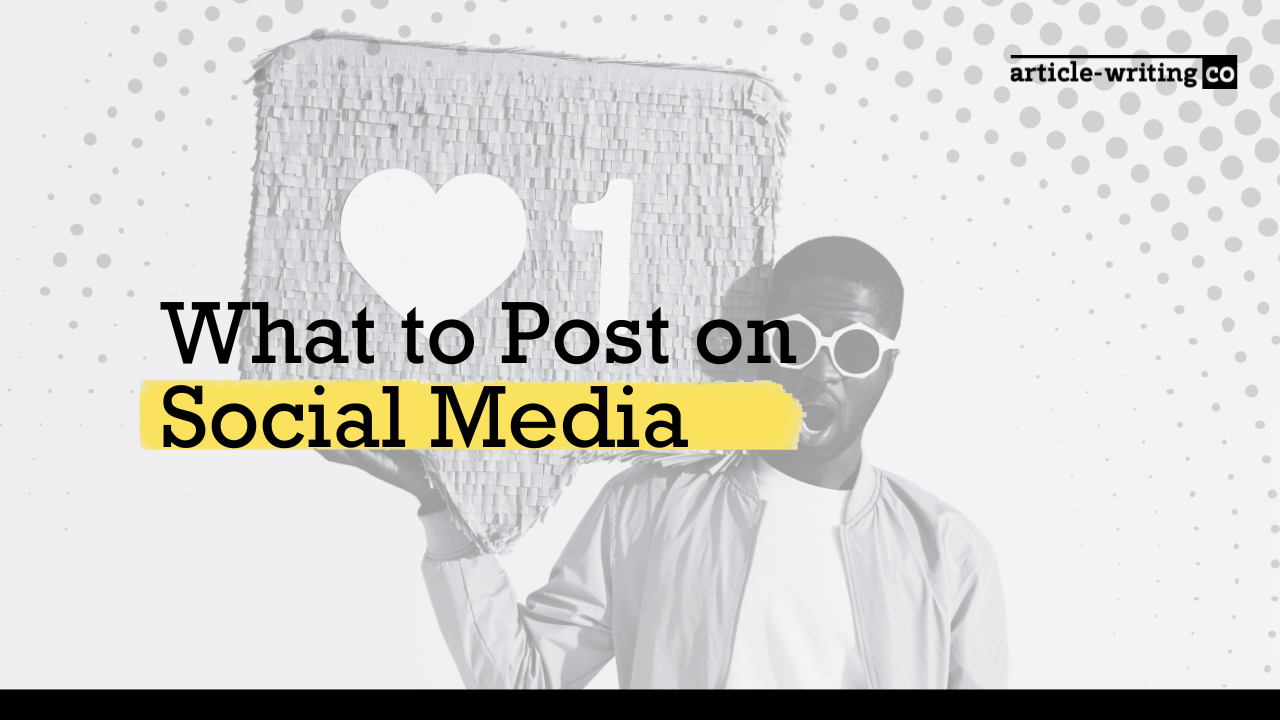Social media is becoming increasingly important as time moves forward. The days when it was enough to simply set up a Facebook account with a couple of posts every month are over. In order to make a real impact on social media, you need a strategy. You need to know what to post on social media, what to write about on company social media channels, and how to go about hiring social media copywriters.
Having a great online presence can do a lot for any business, and social media is one of the best places to start building that.

What Does Social Media Have to Offer?
Social media offers you the chance to market specifically to people you know are already interested in your product. A large following on a Facebook page is essentially just a pool of ready-to-go conversions if you’ve set yourself up properly. This supplies you with a platform that can help you grow your following based on what you post on social media. Additionally, it allows you to engage with those customers on a more personal level, allowing for further engagement and increased brand trust. This leads to more connections and thus more customers or clients. All key factors to growing a business.
Social media marketing is a complex game made up of simple parts. While seemingly simple on the surface, a closer look paints a much different picture. Take a look at any successful social media campaign and you’ll see how complex it can get. A great example of this is the case of Absolut Vodka, who manage to increase brand awareness by 5 points using only Instagram.
The Right Social Media Platform for Your Business
When it comes down to social media platforms, there are more than a few to choose from. While it would be nice to have a perfect strategy running on all these platforms, that would require a lot of man hours and hard work. What platform you use should be just as big a decision as what to post on social media. We want to work smarter not harder, so in our case, we want to focus our efforts on the ones that offer the most benefit for our company. By doing this, we should see a better return than if we were to spread ourselves out amongst all the networks available. In order to decide on which network is best suited for your specific business, we need to understand the benefits each offers and, more importantly, the community that engages with that platform. First, ask yourself 3 questions:
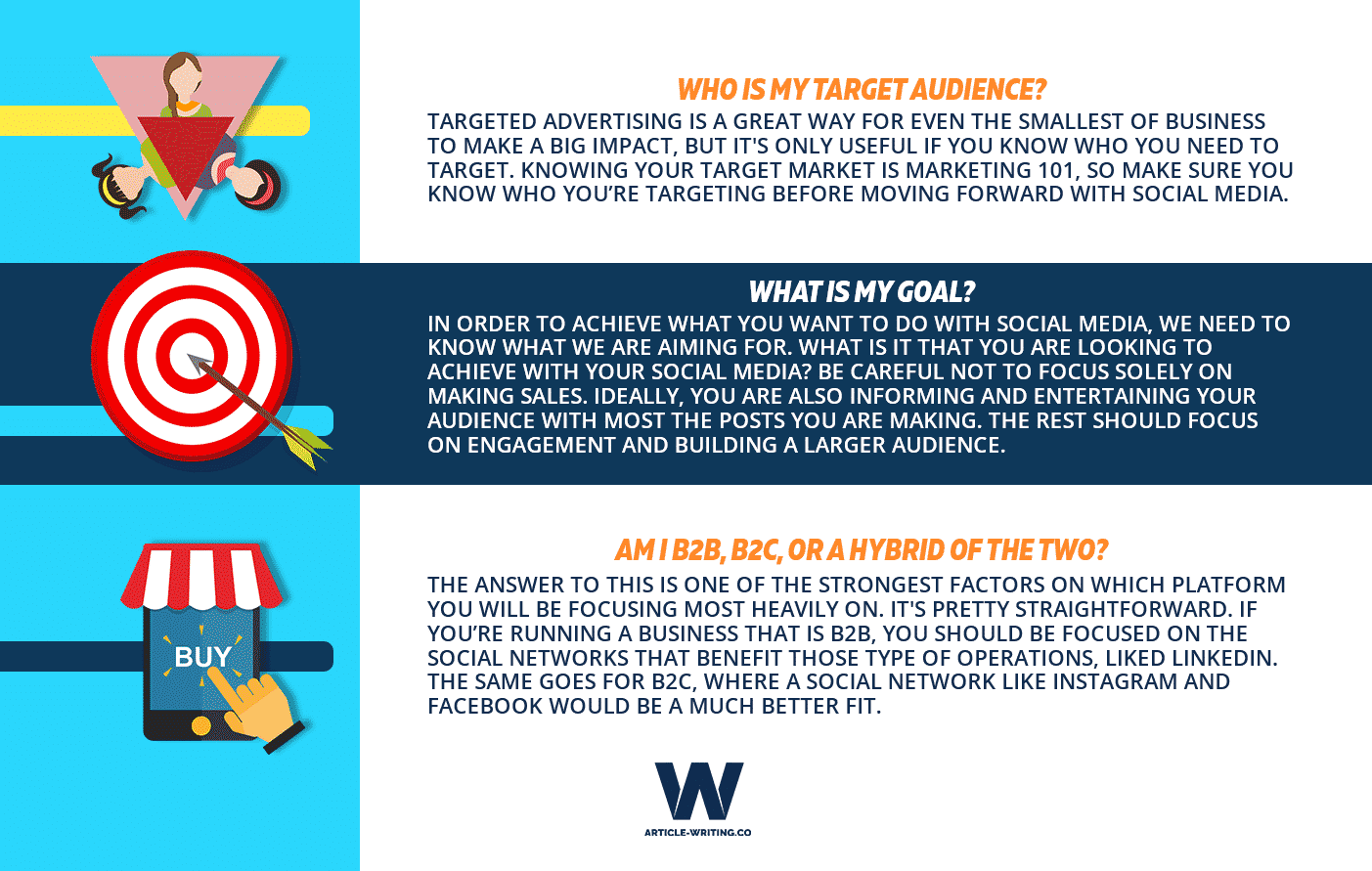
Facebook is best for B2C but can see some success with B2B as well. Facebook also benefits from SEO, meaning your Facebook page will be looked at and indexed by search engines. This makes Facebook almost essential in any social media strategy, it really doesn’t matter who you are or what you do, you need Facebook.
Twitter is a great place to post updates, show expertise, promote products or services, and share content. It’s a mix of B2C and B2B, leaning more towards B2C. If your main service is providing content, such as an online publication, you need to be running Twitter. This is essential for any business revolving around creating content as their product.
Instagram is great for sharing visual content such as short videos and more notably images. This makes it a go-to for any business that deals with a more visual product or service. This is a purely B2C network in most cases. If your company is based on design, fashion, or any other creative field, Instagram is going to be for you. Clothing brands find a lot of success here, as do independent artists and designers.
LinkedIn was designed from the ground up for business, but there is some B2C action when you consider employment needs. While almost every business should be on LinkedIn, you don’t need to focus too heavily here outside of hiring if you aren’t directly B2B.
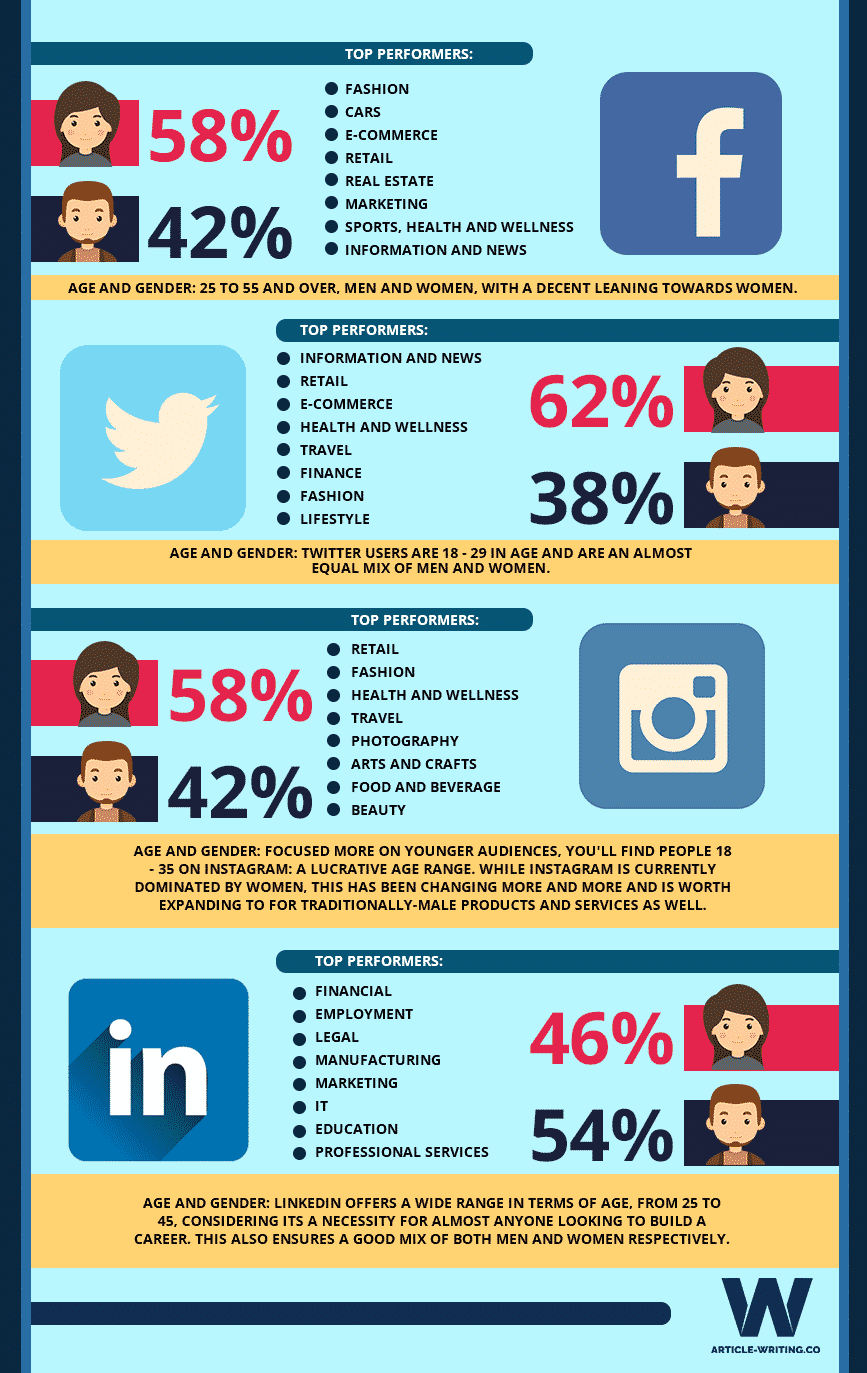
The Basics of Social Media Marketing
Depending on your platform, posting to social media usually boils down to a few simple clicks. For Facebook, you simply go to your page, create your content and hit post. You get an almost identical experience with Twitter, Google + and LinkedIn. The standout options here are Snapchat and Instagram, which add filters and a few other steps in between the standard post process. All of these systems are simple to use and easy to pick up, although often offer more advanced features for those willing to dig a little deeper.
Best Times to Post on Social Media
When it comes down to it, the main focus of your social media efforts is to promote engagement and start conversations. To do this, we are going to tailor our content for success in these areas. Before we take a look at what kind of content is going to help pull this off, we need to make sure that anything we post is getting the most possible eyes on it. To do this we need to know what time to post our content in order for it to receive the most possible exposure. It is also important to consider whether or not you’ll be posting to audiences located in multiple time zones when looking into when and what to post on social media.

Facebook sees the best results on Saturdays and Sundays when most of its users are active. You can expect to receive upwards of 32% higher engagement during this time, which is something that you need to be taking advantage of. Other key days are Tuesday and Friday, where you can expect to see an 18% increase in engagement. The best times to post to Facebook are 9 am, 1 pm, and 3 pm. This applies even on non-peak days.
Twitter is a bit of an odd beast. It generally sees a lot more people popping in throughout the day instead of at key times. The best day to post to Twitter is Wednesday, although any Twitter strategy should include daily posting. The best time to put those posts up is 12 pm, 3 pm, 5 pm and 6 pm. You can expect your B2B efforts to get about a 15% increase in performance during business hours (noon and 5 pm are peak moments for worker breaks), and B2C to get about 17% more on the weekends. It’s worth noting that Twitter users are 181% more likely to be using the service while commuting to work, says Twitter, making this a great time to grab some extra eyeballs.
LinkedIn is, obviously, all about business. This is key to the best times to post to the service, as we know we are targeting users in the business world. The highest peak days for LinkedIn are Tuesday, Wednesday, and Thursday. Monday and Friday should be avoided almost completely, as they see very low engagement. When it comes to what time to post, you want to focus on the time before and after work. People who use LinkedIn heavily tend to use it sort of like a newspaper, reading it in the morning, on lunch, or when they get home from work. This is when we are going to try and target them. Try to post on LinkedIn between 7 and 8 am, 12 pm and 5 to 6 pm.
The best times to engage with your Instagram following are Mondays and Thursdays. While you can expect to see steady views all throughout the week, these days will be the highest. Sunday shows very low engagement, as most users are either out or sharing their own content from the weekend rather than viewing it. Surprisingly, the best times of day to post are 2 am, 8 am to 9 am, and 5 pm. You can see how this network trends closer to younger people. Avoid posting at 3 to 4 pm, where the network sees its lowest number of users. Posting videos at 9 pm will increase interactions with that content by about 34%.days.
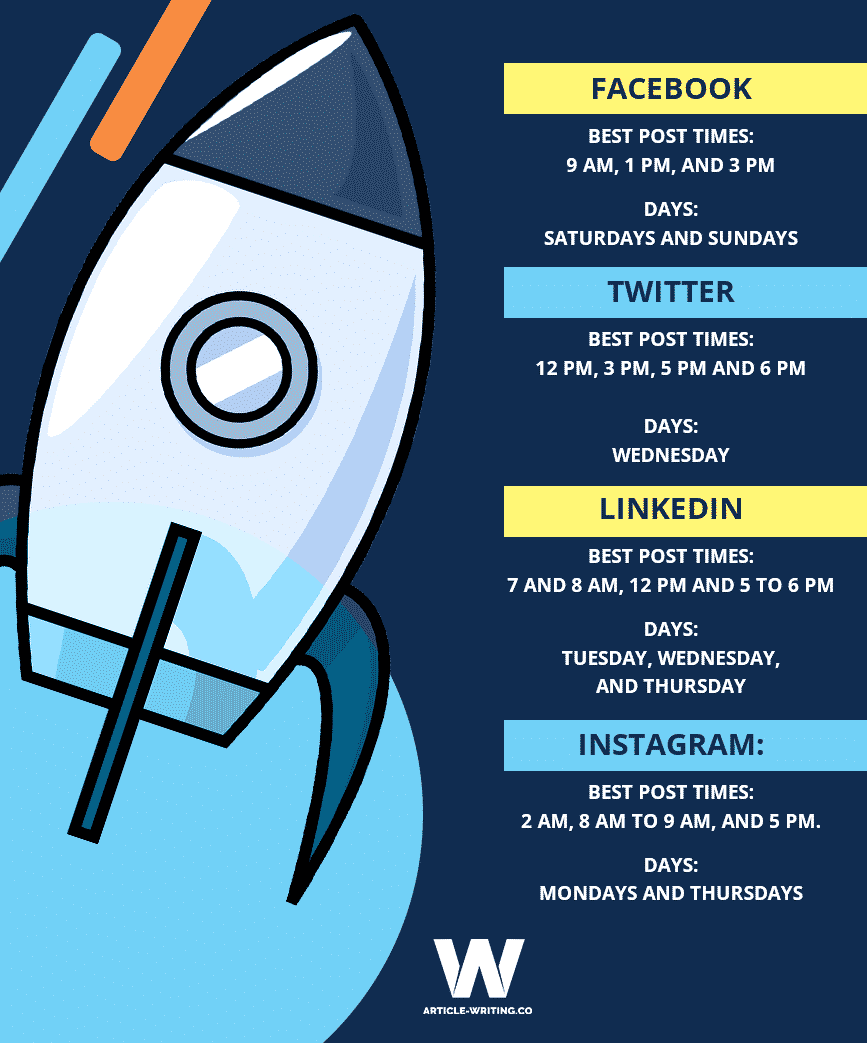
Content for Social Media
So now that we know when to post in order to see the best engagement for each social network, we need to figure out what exactly what to post on social media to share with our followers.
“Creativity, consistency and context are pillars of content marketing. Creativity differentiates you, consistency builds trust, and context helps people apply things to themselves. Ignore this at your own peril.”
Image Content
Your content strategy is going to vary widely based on your network and the type of products or services you are offering. For example, if you are an outdoors clothing company using Instagram to promote your brand, you are going to want to focus on great product shots outside in the wilderness, something that should appeal to your customer base. Images always draw the eye and should be worked into most types of content.

A powerful Instagram post via World Vision Canada.
Article Content
If you’re running a company that provides a service instead of a product, you can share content from around the web that relates to your specific company’s views, goals or services. An example of this would be a home insurance company sharing content on how to best protect your home from flooding. It’s also a great idea to set up some sort of blog for your company, whether it be on your website or hosted somewhere else, and to start posting your own unique content there as well. This will help overall ranking and give you articles to share that are tailored to your business and audience.
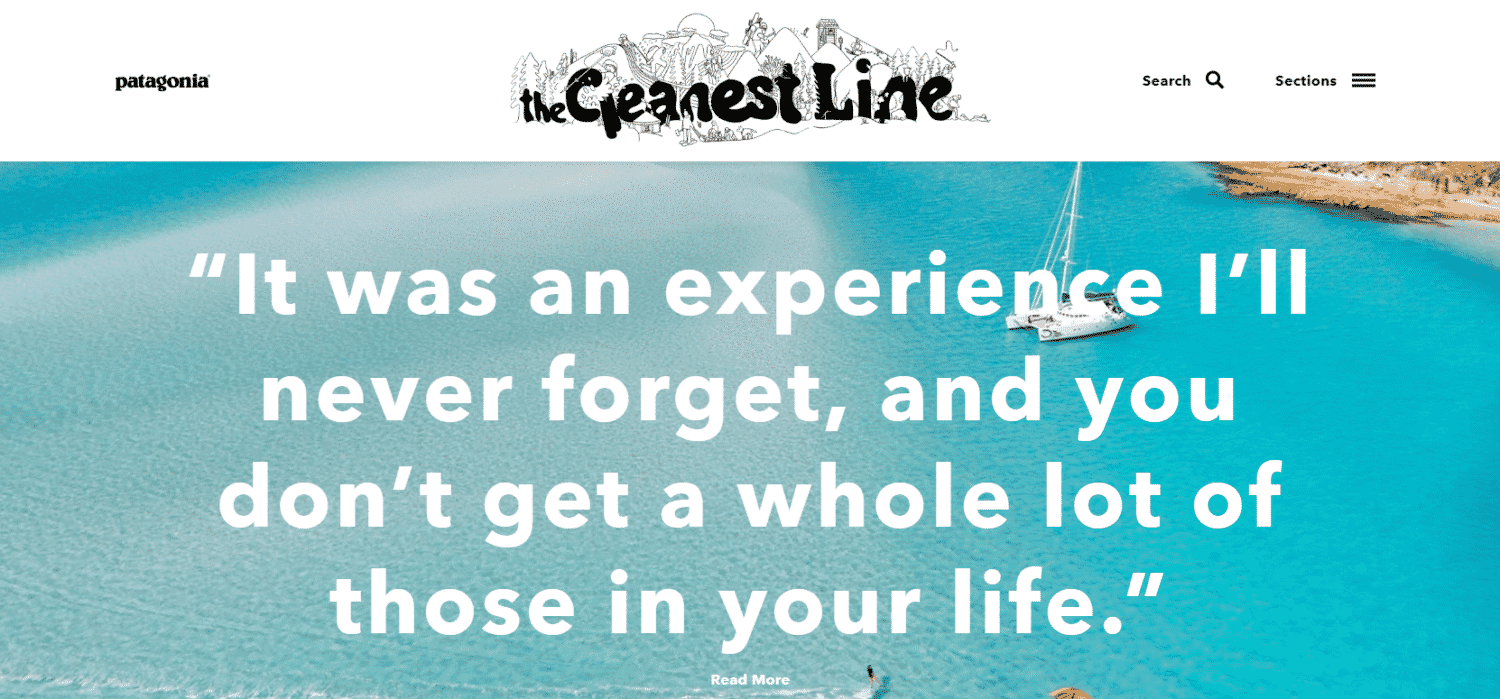
The Cleanest Line, one of the top company blogs of 2017.
Video Content
Video content is a great way to get people to engage with your brand. It is by far the preferred way to take in information, especially among younger audiences, and offers some unique benefits over other content. Unfortunately, video content can be costly and time-consuming to produce, and often requires a small team, making it one of the more difficult types of content to create. This can make it sometimes out of reach for smaller businesses just starting out.
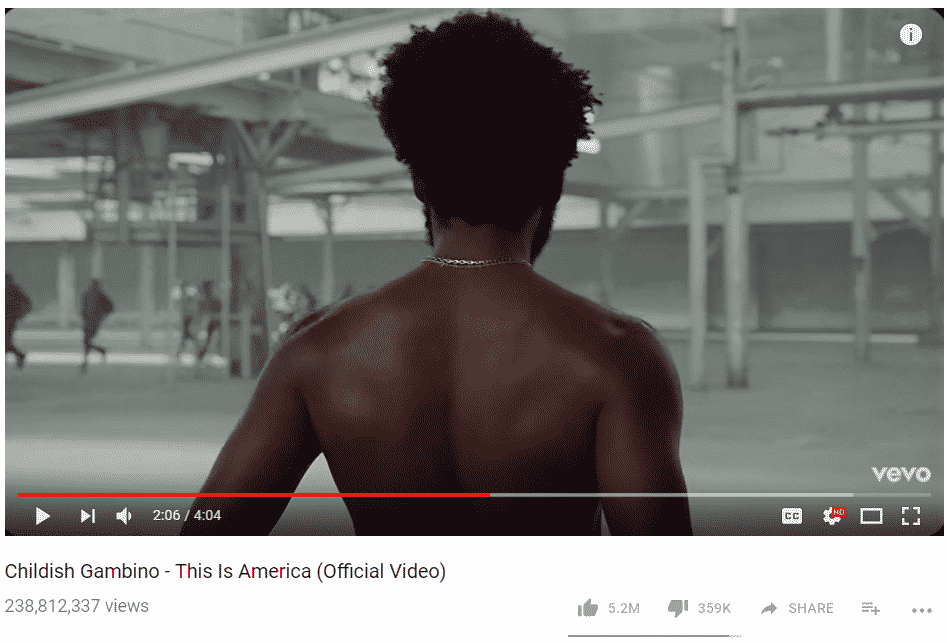
Chidish Gambino‘s incredible music video “This is America” was an overnight sensation.
Curating Content
When it comes to creating or finding the content you want to share, there are a few tricks you can use to make the whole process easier. If you are naturally creative or skilled in one of these areas, it offers a great place to cut some costs for a little extra work. If you are like most business owners, you likely find yourself either unequipped or simply not wanting to create your own social content. In these cases, you can focus more heavily on sharing other content throughout the web. There are also a number of free and paid image resource websites, such as Pixabay and Shutterstock, where you can get images to share or to supplement your current content.

Curating Content
When it comes to creating or finding the content you want to share, there are a few tricks you can use to make the whole process easier. If you are naturally creative or skilled in one of these areas, it offers a great place to cut some costs for a little extra work. If you are like most business owners, you likely find yourself either unequipped or simply not wanting to create your own social content. In these cases, you can focus more heavily on sharing other content throughout the web. There are also a number of free and paid image resource websites, such as Pixabay and Shutterstock, where you can get images to share or to supplement your current content.
Hiring Social Media Copywriters
Original content is key. For this, you can simply hire a freelancer to produce your content for you. There are many services that offer content creation, some going as far as focusing specifically on social media content. In the case of written or graphic content, it’s always best to go with a company as opposed to individual freelancers. These companies often work with freelancers already and will have already confirmed they are worth using. You’ll be more likely to get good content from an experienced professional by doing it this way and cut out a lot of potential lost time and money. A great example of a service like this is Article Writing Co’s Social Media Writer Service, who offer professional writing services for social media.
What to Post on Social Media
Video content is a great way to get people to engage with your brand. It is by far the preferred way to take in information, especially among younger audiences, and offers some unique benefits over other content. Unfortunately, video content can be costly and time-consuming to produce, and often requires a small team, making it one of the more difficult types of content to create. This can make it sometimes out of reach for smaller businesses just starting out.
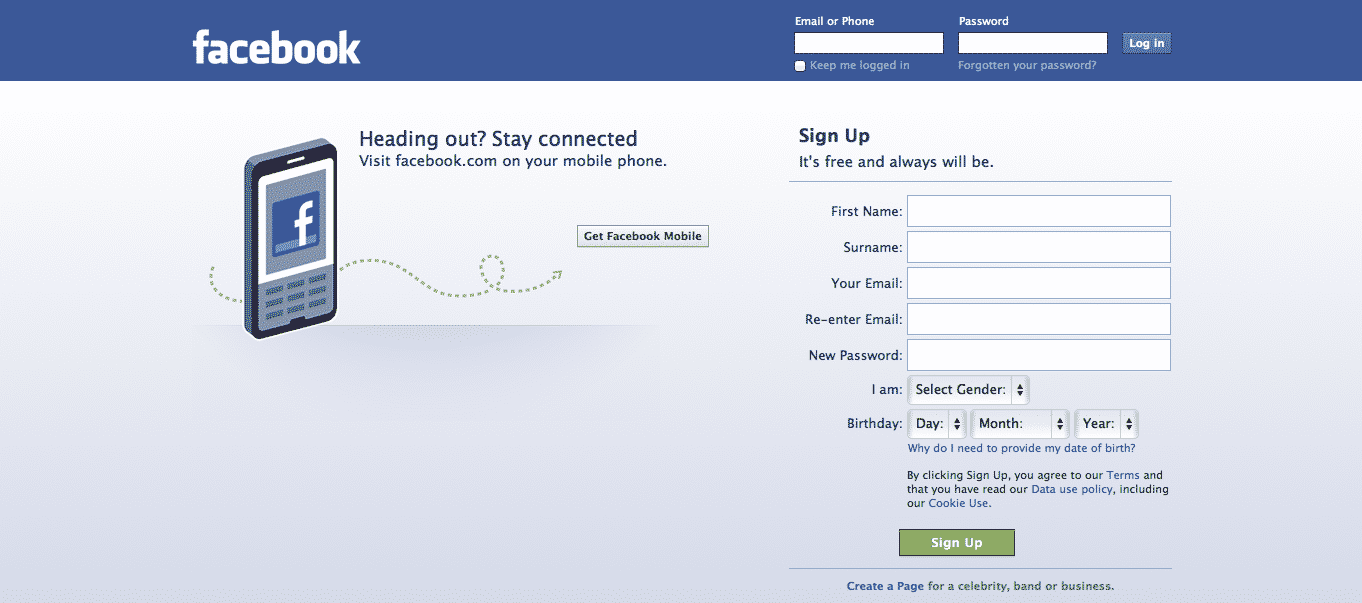
Instagram: Quotes, Stories, and High-Quality Images
Emphasis is on high quality. While some of those meme pages may be able to get away with low-quality images, your business needs to be producing high-res content. Your videos should be of an equal quality. Quotes do well here as well but be sure they fit your niche and are again of good quality. You can use Instagram stories to give updates in real time about your business, or just to easily up engagement with your users.
Twitter: News, Blogs, and Updates
Twitter is great because you can update it quickly and easily throughout the day fairly easily. Since it’s almost completely written content, you can hop on and update your customers easily without much extra work. Use Twitter to share updates about your services, products or business. Share relevant or original content to your followers and keep them up to date with news articles from within your industry. All of this is proven to increase engagement.
LinkedIn: Jobs and Professional Content
LinkedIn is the business social network and should be treated as such. Posts here should be shared content about your industry, specifically related to working within it or professional insights. This can also include updates from within your company and also any job openings you may have available.
Getting the Most Out of Your Post
Once you’ve got your piece of killer content and found the best place and time to share it, we now need to optimize that post, so it can go as far as possible. Most social networks offer some really great options to target your posts and advertise them to users who may not be following you but have similar interests and habits to your user base. This will require some research into exactly who your target audience is and how they tend to engage with that specific platform.
Utilizing Hashtags
A great way to get your post seen by people outside your current followers is through the use of hashtags. Hashtags allow you to sort your post into categories within the network. If users view specific hashtags, they will see your post in that feed regardless of whether or not they follow your account. Take a look and see what your competitors are using on their posts and implement hashtags that are relevant to you. You can also try and find out what hashtags your current users are viewing and start adding those to your posts. You can also use hashtags to help you plan exactly what to post on social media. Most of the aforementioned social networks support hashtags to some degree, and you should be using them whenever possible. It’s a free and easy way to draw new users into your following. Another great way to promote conversation and engagement within your current audience is simply engaging with them in the comments. This can go a long way to helping build brand trust and loyalty, not to mention word of mouth marketing. Take advantage of any analytic tools the social network you’re using has to offer. These will offer invaluable insight into your follow base, post reach, and overall engagement.

You Need a Killer Social Media Presence
If you can master your audience and move your social efforts in the right direction to appease them, social media will prove invaluable for scaling your business. In order to do that, you need to make sure you’re on the right platform, posting the right things, and targeting the right people. To do this, you need to be hiring the right people to create the right content, use all the tools available to help understand your audience, and create loyalty by engaging with your customers in smaller more personal ways. Keep all these tips in mind and you’ll be well on your way to knowing exactly what you need to post on social media.
Jonathan Bessette is the General Manager at Article Writing Co. He’s been a writer, editor, and outreach specialist, has worked with clients in dozens of different industries, and has created engaging content, consistent growth, and exciting outcomes.

